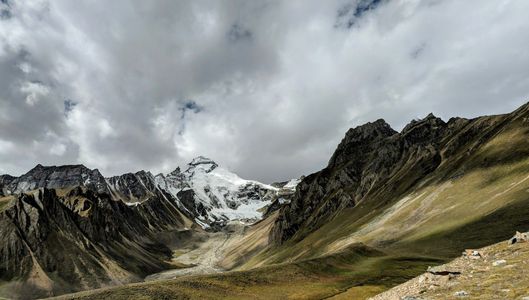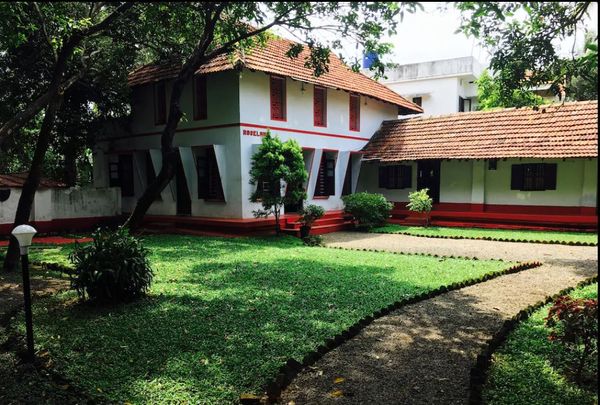Timeless Trails: Oldest Trekking Routes and Pilgrimage in Uttarakhand
 Ankit Rawat
19 Jul, 2025
10 mins read
201
Ankit Rawat
19 Jul, 2025
10 mins read
201

Uttarakhand, often called the “Land of the Gods,†is known for its ancient pilgrimage sites and timeless trekking routes. For centuries, sages, kings, and travelers have walked through these mountains seeking peace, adventure, or a deeper connection with nature and the divine.
These trails are not only pathways through forests and valleys. They are living parts of history, filled with legends and spiritual meaning. In this article, we explore the oldest and most important pilgrimage and trekking routes in Uttarakhand
1.Oldest Trekking Routes in Uttarakhand
Kuari Pass Trek
The Kuari Pass Trek, also called the Curzon Trail, is one of the oldest trekking routes in Uttarakhand. It became popular in the early 1900s after British official Lord Curzon explored it.
This trail begins from Joshimath and moves through oak forests, meadows, and high ridges. At the top of Kuari Pass, you get clear views of famous Himalayan peaks like Nanda Devi, Trishul, and Dronagiri. Villages along the trail reflect traditional Garhwali culture. This route is historic, scenic, and beginner-friendly.
Pindari Glacier Trek
The Pindari Glacier trek in the Kumaon region has been used by locals for generations. It once served as a trade and travel route for people moving between villages and valleys.
Starting from Loharkhet, the trail passes through beautiful places like Khati and Dwali. The final point, Zero Point, offers close views of the glacier. This moderate trek offers forests, rivers, and high mountain views. It's ideal for both first-time trekkers and those seeking history along the trail.
Har Ki Dun Trek
The Har Ki Dun trail is called the Valley of Gods. It’s one of the most scenic and culturally rich treks in Uttarakhand. The trail starts from Sankri and passes through Osla village, known for its wooden temple and legends from the Mahabharata.
This route is believed to have been used by the Pandavas on their way to heaven. Surrounded by peaks and alpine forests, it offers a peaceful and meaningful trekking experience.
Kedarkantha Trek
Kedarkantha is now famous as a winter trek, but its roots go back to old village paths used by shepherds and locals. The trail starts from Sankri and passes through snow-covered forests, open meadows, and campsites under starry skies.
Though not a pilgrimage trail, it connects you to the lifestyle and land of the Garhwal Himalayas. The trek ends at a high ridge with amazing 360-degree views of the mountains.
Nanda Devi Outer Sanctuary Trail
While the Nanda Devi Inner Sanctuary is restricted, the outer trails are open and steeped in history. Villages like Lata and Tolma were once part of a spiritual and cultural network around the Nanda Devi Biosphere.
These routes were walked by shepherds and pilgrims for hundreds of years. You can still follow ancient paths that lead to alpine meadows and sacred points around the Nanda Devi mountain.
2. Oldest Pilgrimage Routes in Uttarakhand
Char Dham Yatra
The Char Dham Yatra is the most important pilgrimage circuit in Uttarakhand. It includes four ancient temples — Yamunotri, Gangotri, Kedarnath, and Badrinath.
- Yamunotri: The trek starts from Janki Chatti. Devotees walk through forest paths to reach the temple of Goddess Yamuna.
- Gangotri: After reaching the temple by road, many pilgrims continue walking to Gaumukh, the glacier where the River Ganga begins.
- Kedarnath: This 16-kilometer pilgrimage starts from Gaurikund. The temple is dedicated to Lord Shiva and is one of the twelve Jyotirlingas.
- Badrinath: Though accessible by road today, it has been a spiritual stop for centuries. Pilgrims once walked for days to reach this shrine of Lord Vishnu.
These four temples are believed to help a soul achieve freedom from the cycle of life and death.
Panch Kedar Yatra
The Panch Kedar temples are five sacred shrines of Lord Shiva. According to legend, the Pandavas built them to seek forgiveness after the war in the Mahabharata.
- Kedarnath: The most famous of the five.
- Tungnath: The highest Shiva temple in the world, reached via a short but steep trek from Chopta.
- Madhyamaheshwar: Reached by trekking from Uniana through Ransi village and deep forests.
- Rudranath: A tough trek through remote mountains and thick woods, yet deeply peaceful.
- Kalpeshwar: The easiest to access, but still holds ancient value.
Each temple is located at a high altitude and involves trekking through rugged but beautiful terrain.
Hemkund Sahib and Valley of Flowers
Hemkund Sahib is a high-altitude Sikh pilgrimage site located at 4,329 meters. Pilgrims trek from Govindghat to Ghangaria, and then up to Hemkund. The lake, with its clear water and peaceful surroundings, holds great spiritual importance.
Nearby is the Valley of Flowers, known to locals for centuries. It’s a spiritual journey in itself, as you walk among thousands of blooming flowers in a quiet Himalayan valley.
Nanda Devi Raj Jat Yatra
Held once every 12 years, the Nanda Devi Raj Jat Yatra is one of the longest and toughest pilgrimage walks in India. It covers about 280 kilometers over 19 days.
The yatra begins from Nauti village and ends at Homkund, near Roopkund Lake. It is held in honor of Goddess Nanda Devi and involves passing through snowy passes, deep forests, and ancient temples.
Only a few complete this journey, but those who do say it is a life-changing experience.
Baijnath from Kausani
The walk from Kausani to Baijnath follows an old village path used by pilgrims for centuries. The Baijnath temple complex, built in the 12th century, is dedicated to Lord Shiva and was once a center of learning and worship.
The trail goes along the Gomti River, passing through quiet fields and traditional Kumaoni homes. This is a gentle route with deep religious meaning.
Adi Kailash and Om Parvat
In the Kumaon Himalayas, the sacred peaks of Adi Kailash and Om Parvat are worshipped by devotees of Lord Shiva. The journey starts from Dharchula and passes through high valleys, forest paths, and old trade routes.
Reaching Adi Kailash and Om Parvat is not easy, but the spiritual energy of the place makes every step worth it. These are among the oldest and most remote pilgrimage trails in India.
Final Thoughts
The oldest trekking and pilgrimage routes of Uttarakhand offer more than just natural beauty. They carry stories of gods, legends, and centuries of faith. Whether you are seeking adventure or inner peace, these trails connect you with something greater than yourself.
Trekking here is not just walking on a mountain. Pilgrimage here is not just visiting a temple. It is a return to something timeless a path walked by many, but felt by few.
Written By:
Ankit Rawat



Hotels at your convenience
Now choose your stay according to your preference. From finding a place for your dream destination or a mere weekend getaway to business accommodations or brief stay, we have got you covered. Explore hotels as per your mood.


